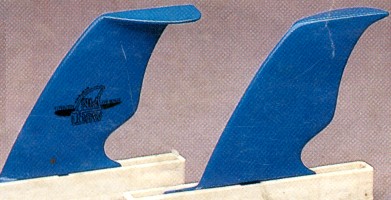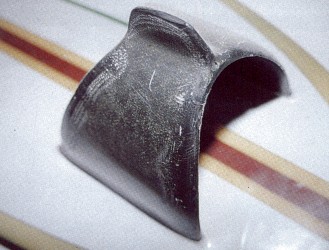yep …once again tom your wording is precise and to the point and correct as always…
and to add a few points as well …
a thruster’s pivot point can move depending on which rail you are on ,if you turning hard on one rail your usings that rails fin to pivot off , but as soon as you switch to the other rail you pivot off the other fin…in that process your angle of attack on your tail fin keeps changing from side to side , as long as your tail fin is set to handle that angle of attack (well foiled) it will keep projecting you forward with every pump…that fin arrangment allows you to maximise extra tail area to drive off in small waves…
as soon as you set a thruster in a different direction , it automatically keeps pulling it self around as long as there is an angle of attack, but with a single the rider has to keep pushing the turn…wasting valueable body torque…for a quick transition into the next turn…
tom i think reducing drag in fins is a waste of time…
we should be more concerned with reducing drag in our boards , and increasing the hold of our fins…
what i mean by the comment reducing drag in fins is , the way futures have put a concave on the inside of the fin , reduces drag but also reduces the effectivness of the fin ,so theres an overall loss of control…and loss of hold…
now im leaving the subject a little …
but bottom contours shaped into surfboards to add a measure of control is really only making up for poor fin foils…thats why people note an improvement in performance with a change in bottom contour…
put decent foils in your board and add any bottom contour and see how much worse it goes…
and another comment agreeing with toms comment about keeping the camber forward on your fins…it keeps the water attached to the low pressure side at AOA , as long as your fins are shooting water out the back , there propelling you forward…
hold and drive in one package ,combined with a board shape free of contours shaped in for control,= one seriously fast sensitive surfboard…
theres more …but time is the enemy…as always
regards
BERT

